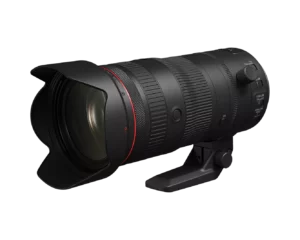#FlashbackFriday #FBF Do you remember our Community Spotlight with David Norris?
Australia-based filmmaker, David Norris’s short film Tuesday wins first place in The Edgewise Media and Panasonic Digital Media Film and Video Shorts 2008 Awards Competition featuring “AMQ”. The 14-minute drama-suspense was written, directed, and edited by Norris. The story is of a recent quadriplegic named Jim (played by Steve Young) whose only contact with the outside world is his career and his wife, Meg (played by Louise Quill). During bath-time one day, Jim finds himself alone and trapped inside the bath and his own useless body. The plot: Will Jim ever be found after his anger at the world has alienated himself from the world?
Tuesday’s crew consisted of Virginie Tetoofa (cinematographer and editing assistant), Andrew MacLeod (camera operator), Shannon Patterson (1st assistant director), Simon LeRiche (composer), Paige Anderson (camera assistant), Marco Treglia (sound recordist), John Fairhurst (boom operator), and Charme Lee (online editor). Annabelle Murphy and Siobhan Jackson served as supervising producers for the film. Kathy Hinch and Holly Sharpe served as casting assistants.
Up-and-coming filmmaker David Norris shares some behind-the-scenes info about his winning film Tuesday in a brief Q&A with StudentFilmmakers Magazine while in the middle of writing his next screenplay.
If you could share a tip or technique in relation to writing short films, what would it be?
David Norris: A tip for writing short films? That’s a hard question, mainly because I still find it difficult writing short films within set running length boundaries. All my ideas usually need a little bit of reworking to get shaved down, yet I usually still end up a few minutes beyond the set limits. Aside from that, I always seem to come up with a concept, twist, or story idea, and then develop characters around them to make the ideas interesting. I like to try and make mini-features – three-act- structure films with a situation or crisis, a middle and resolution – as opposed to making “slice-of-life” character pieces.
While you were writing Tuesday, did any interesting challenges come up?
David Norris: Actually, writing the film was easy this time. I came up with the concept of a disabled man getting eaten by his hungry dogs at the initial concept stage, and the film just wrote itself. This isn’t always the case though. Budget-wise, all the disabled-person’s equipment existed, my brother is disabled, and it only cost a couple of hundred dollars to produce.
Did any issues come up in regards to camera placement and positioning, getting certain shots, or in relation to POV?
David Norris: The main POV issues revolved around the interaction with the protagonist’s dogs. Their shots alone took an entire day. They needed to give me a specific look, reaction, and deliver the performance while looking into the lens. It was a matter of trial and error mainly, and just slowly teaching the dogs to take the food from a certain position. It was torture, but not very interesting really.
What challenges came up during post production?
David Norris: I had many challenges with editing. The rough cut was some 20 to 25 minutes, and there were two scenes that I hadn’t pre-visualised with storyboards. I had decided to just shoot it on the day. So I had them covered from 10-odd angles, but no idea of how to cover the scenes through the edit, aside from the opening and closing shots. The best help was my editing assistant, Virginie. She came in to help after a week or so of my pulling out my hair. Although I usually love the editing stage, this film was a huge task. We had more than ten 90-minute betacam tapes of coverage. Anyway, somehow, having someone edit for you while you call the shots, is such a smoother editing experience.
Join the Filmmakers Network or Update Your Profile!
networking.studentfilmmakers.com
Subscribe to StudentFilmmakers Magazine
StudentFilmmakers Magazine: Each issue addresses the needs of the five distinct phases of film and video making.



